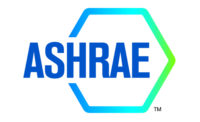IIoT deployments offer many benefits but also many challenges — one of the greatest being technological diversity. Even once business goals are set and parameters and metrics are agreed upon, this diversity remains an issue — on one side is a known unknown (which new technologies to trial and deploy) and the other is an unknown known (how to manage legacy technologies). The latter is particularly complex, due to diversity in the underlying technology itself, but also factors such as the original purpose of the technology, the data structure and access methods, programming languages, and protocols that may not translate well (or at all) into a modern IT setup. Unfortunately, this conundrum applies to almost all existing industrial environments, no matter their scale.
Ageing, Pre-Internet Machinery
There are a variety of legacy diversities, most obviously hardware age, which will almost inevitably cover the last 20 years at least, with many heavy manufacturing plant machines harking back to the 1950s and 1960s. On a positive note, the oldest heavy machinery is less of an integration problem and more of a complete retrofit challenge, moreover one that brings visibility to processes and functions that were previously entirely hidden.
Lateral thinking is often required in such legacy situations, where simply bolting new sensors onto old machinery doesn’t deliver the necessary insights or visibility. A recent Deloitte study noted that in some industrial scenarios, direct access to key processes is not possible anyway, giving the example of an industrial process involving an early-stage chemical reaction where direct access to the reaction chamber was not possible. The smart factory team instead were forced to capture other data, such as reaction inputs, temperature, and time, in order to infer how the reaction was progressing. Another example used digital cameras, AI, and vision systems to “read” gauges, thus capturing that analogue data and digitizing it.
The (Big) Data Challenge
Data is a key challenge across most legacy hardware though as different formats from different machines, sources, and sensors need to be interrogated and formalized in order to add long-term value. There are multiple parts to this vast area, too, not only dealing with the data created today and tomorrow by live processes but also investigating the data lakes created by existing sensors and processes. These lakes can contain vital operational insights, especially where logs extend back to the beginning of a particular machine’s life, for example. By ingesting this data, operators and managers have immediate visibility of the machine’s historical performance, enabling future diagnosis or optimization to be far more efficient. This uniquely valuable data can also be used for modelling and predictive purposes, such as in increasingly valuable ‘digital twin’ strategies.
Managing Tech Diversity
Deloitte recommended several key methods to manage technological diversity that have been proven in the field. Interestingly both techniques add value in a wide variety of situations — focusing on ‘digital lean’ and secondly, people. Digital lean is a well-known methodology but still can deliver substantial benefits in real-work IIoT and smart factory deployments, according to the analyst firm. Lean’s ability to optimize processes and workflows as well as identify and reduce waste makes it possible for proponents to capture accurate, precise, and timely information about operations.
Meanwhile, people facing techniques such as ensuring that tools reflect the needs of real world end users, ongoing learning, and employing diverse teams with a range of skill sets are also critical. Smart factory technology can not only create entirely new roles in industrial settings but can also help to organize maintenance teams and operators into the optimum places and times.
Non-Legacy Tech Proliferation
Of course, not all the challenges of technological diversity lie with integrating legacy hardware, software, and data repositories. Delivering an IIoT project requires a host of decisions concerning technologies, architectures, and connectivity solutions, which can prove complex to navigate, especially with one eye on future interoperability, emerging standards, and generally increasing compliance requirements.
Of course, there are standout trends even in this complex melting pot, interestingly around sensor choice and use, where previous generations of relatively ‘dumb’ sensors are now being augmented with AI and machine-learning tools to enhance their performance. Moisture sensors in agricultural irrigation systems are a great example. Just a few years ago, these devices merely switched water flows on and off, based on current requirements.
Now, those sensors would be linked to external data feeds, such as Met Office information on incoming pressure front changes likely to carry rain, saving valuable resources. More sophisticated sensor arrays that detect temperature, humidity, and pressure to provide a more rounded environmental analysis are also powering this trend — all at once proliferating the technology choices available but also helping to make that selection process easier to manage.
Overall, there can be only one direction of travel in IIoT, and that is forward — into increasingly diverse environments that will inevitably become more complex and multi-layered over time. However, by embracing methodologies such as digital lean, encouraging diversity in team makeup, and planning AI and machine learning from the start, IIoT can overcome that legacy challenge and truly blossom.




